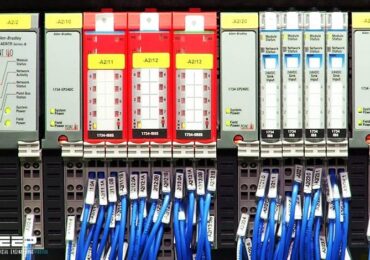Efficiency in modern packaging lines depends on more than just mechanical precision—it thrives on synchronized automation. Programmable logic controllers, or PLCs, shape the rhythm of production by linking motion, timing, and data across every stage. For anyone wondering what is PLC programming, it’s the system intelligence that brings harmony between complex equipment and high-speed manufacturing demands.
Conveying and Part-infeed Synchronization
In the early phase of packaging, product movement sets the pace for everything that follows. PLC programming manages conveyor speeds and sensor feedback to ensure parts feed into machines at consistent intervals. This synchronization prevents jams, reduces material waste, and balances the flow between upstream and downstream processes.
What makes this stage vital is the ability of custom PLC systems to adapt instantly to product changes. Whether running bottles, cartons, or pouches, programmed logic adjusts motor drives and timing pulses to match production needs in real time. This adaptability forms the foundation for smooth operation throughout the packaging line.
Dose Measurement and Fill Station Regulation
At the fill stage, precision dictates product quality. Using inputs from level sensors and flow meters, PLC-controlled valves and pumps regulate exact dosages of liquid, powder, or granular materials. The system maintains consistency across thousands of fills, eliminating the need for manual adjustments and minimizing overfill losses.
For manufacturers relying on a rockwell allen bradley plc or similar platform, programming allows closed-loop control—where data feedback automatically fine-tunes each cycle. This tight regulation not only enhances accuracy but also improves compliance with packaging standards, ensuring every container leaves the line with the correct volume.

Container Forming and Initial Packaging Closure
Forming containers from flat materials or preforms is another stage driven by timing and temperature control. PLCs monitor heating zones, vacuum levels, and mold positions, making sure every container achieves its shape without deformities. The system aligns each forming cycle with the downstream process to keep throughput steady.
Once containers are filled, the first closure or sealing operation begins. Through logic-based control, actuators and servo-driven presses perform capping or sealing with consistent torque or pressure. The precision of a PLC programming company’s system design ensures that each closure meets safety and aesthetic standards before advancing to inspection.
Sealing Integrity Check and Defect Detection
Detecting seal failures early saves time and prevents costly product recalls. Sensors and vision systems connected to PLCs verify seal temperature, pressure duration, and alignment. Any deviation triggers an immediate response—stopping production or diverting defective items from the main line.
This automated scrutiny eliminates human error and keeps defective products from reaching packaging or shipping stages. Control system integrators often integrate these inspection tools into a centralized interface, allowing operators to view real-time quality data and respond to alerts instantly.
Label Application and Code Printing Integration
Labeling and coding demand flawless synchronization. PLC-controlled servos ensure each label lands precisely where it should—aligned, wrinkle-free, and matching the product’s orientation. The same system communicates with printers that apply barcodes, lot numbers, or expiration dates.
Integration between motion control and data management allows seamless coordination between labeling machines and printers. This ensures traceability and regulatory compliance, particularly in industries where identification codes are essential for tracking and recalls. Well-programmed PLC logic keeps every label and printed code in sync with production timing.
Case-packing or Tray Arrangement Aggregation
Grouping products into cases or trays requires perfect timing between multiple mechanisms. PLCs coordinate pick-and-place arms, conveyors, and collators so that items align precisely before packaging. The logic system calculates spacing and orientation dynamically, allowing high-speed aggregation without collisions.
In complex lines, custom PLC configurations can manage mixed-product packaging or variable pack counts. This flexibility simplifies reconfiguration between product runs and supports just-in-time manufacturing models. It’s one of the main reasons PLC-controlled systems outperform manual or semi-automated setups in both speed and accuracy.
Pallet Layer Formation and Load Stabilization
At the palletizing stage, precision becomes even more essential. PLCs direct robotic arms or stacking machines to position cases in specific patterns, optimizing balance and load integrity. Through real-time feedback from weight sensors and encoders, the system maintains consistent layer formation across hundreds of cycles.
Load stabilization follows immediately after stacking. Automated stretch wrappers or banding units, governed by PLC logic, apply the exact amount of tension needed to secure shipments. This prevents load shifting during transport while reducing material waste from excessive wrapping.
Transport Staging and Outbound Load Verification
Before leaving the facility, finished pallets move through a verification stage. PLC programming manages scanners and weigh scales that confirm each pallet matches its shipping manifest. It ensures counts, codes, and weights are accurate—automatically flagging discrepancies for inspection.
Once validated, the system coordinates conveyors or automated guided vehicles to move pallets toward the correct dock or trailer. This coordination enhances logistics accuracy and reduces loading errors. At this final stage, integrated data tracking allows complete traceability of every shipment leaving the line. For operations seeking to optimize performance through automation, R.L. Consulting provides expertise in designing and programming PLC systems that streamline these life cycle stages with precision and reliability.